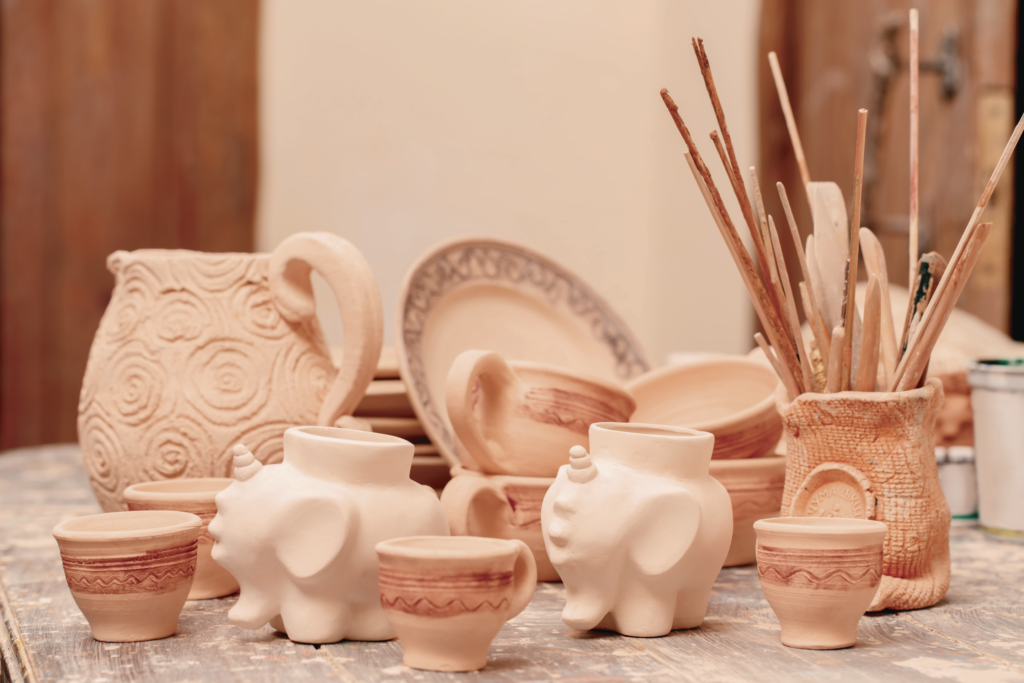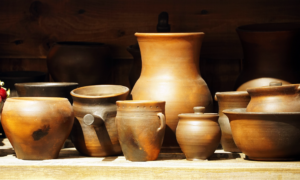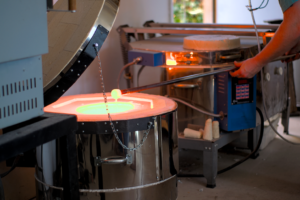Only in the last four decades scientists and experimental artists and researchers have either discovered or developed interesting new materials, as they mix raw materials and produce conditions for them to be constituted in one way or another. Metallurgic, biotechnology and material science are some of the areas where this is being unfolded. One of these materials are the types of ceramic clay.
But how did we arrive at this landscape of new interesting and innovative materials? How did the combination and various types of treatments of raw materials and substances end in what we have today as pottery, ceramic, or glass arts? If you want to learn more about these topics you are in the right place.
And if you are wondering how the human approach to different types of earthing materials, and water, fire, and air could develop many arts, including the ones mentioned above, and, for instance, which are the main types of ceramic clay that are used for pottery, you should also keep reading.
A little bit of history
When archeologists make their geologic explorations and mount an excavation, they often are searching for items that could have the potential of providing valuable and significant information about the human past. This is, human activities, knowledge, cultural practices, and languages.
Very often, one of the most common artifacts archeologists find is pottery, due to its abundance throughout the world and its durability.
Pottery or ceramic objects can effectively provide the information archeologists are looking for, since they commonly have engravings or paintings, but, even if they do not have any preserved sign, they too have something to tell.
We have been very curious…
When human groups and societies encounter a material, resource or asset that is abundant, it does not require an exaggerated energy power for extracting or processing it. This is very adaptable for a very wide range of usages and applications, they do not doubt it twice and they start to take advantage of that resource that is convenient to exploit.
Different types of clay have always been naturally present in every geography around the world, and, as we said, it is abundant, cheap and adaptable. Although not every type is usable, those types do appear widely available, so pottery and ceramic arts were independently developed in many parts of the world and at different moments of history.
As early as 30,000 years ago we can find evidence of the human unique artistic nature, since archeologists have found antique clay figurines and pottery objects where some artistic experimentation can be appreciated. Human natural tendency for arts inevitably extends to every area of expertise they gradually domain, and so it was, and still is, with pottery.
But this natural inclination on esthetic realms comes inherently related to everyday activities. When humans started to gather and stay for more and more long periods of time, and they accumulated more goods and commodities, they also started to have more time to spend on artistic practices.
The adoption of an agricultural lifestyle, when villages and towns started to develop, and people started to focus on discovering ways for mastering many crafts, generally coincides with the introduction of pottery for containing grains, foods, and every kind of liquids.
Durable, waterproof, strong, and resistant vessels and containers were needed. And why not to decorate, design and detail these pots, bowls, glasses, plates, and new and innovative recipients.
Elaborately decorated clay pots were already produced in Japan by about 13,000 years ago, and you have probably heard or read about the fine and very valuable Chinese porcelain, which has a very long and ancient tradition.
We are not saying that because of the adoption of a sedentary way of life, pottery was then developed. This could be a simplistic approach. Although yes, pottery was improved and refined, and the objectives artisans were looking for did change from ancient motivations.
Neolithic Era
For instance, in the Neolithic era, tribes in Near East developed special kilns for parching cereal grains and to bake bread, so they managed to dominate fire and produce high temperatures in enclosed and controlled facilities, which then allowed the unfolding of the techniques for clay firing and the interest on studying the different types of ceramic clays.
The use of these kilns, thus, added new possibilities to the development of pottery, but it did not focus solely on ceramic clay.
And we are referring not to the fact that with the development of the knowledge and technology for kiln design, other crafts like metal and glass working were too refined; we are actually referring to precisely the fact that pottery and all the other sister arts developed the art of designing kilns.
Types of ceramic clay
Since ceramic is a broad term that includes a very long list of materials and substances such as glass, bricks, cement, pottery, porcelain, stoneware, earthenware, graphite and diamond, it is easier to focus on the raw material that actually compose any piece of ceramic: clay.
To be even more concise, we can say ceramic is anything that is made from clay that has been fired.
But wait? What is clay? Why can we talk about types of ceramic clay? And thinking about the story we reviewed earlier, about sedentarism and the use of pottery, what kind of clay body would you use if you wanted to make a pot that would be used for fine dinnerware and that needed to hold water?
Well, if you specifically have this last question in mind, keep it there. But first we should consider important differences between the main types of ceramic clay.
Clay is a term that refers to any type of fine-grained natural soil-like material rich in aluminum phyllosilicates. They come in a very wide range of colors and textures depending on purity, from orange red to white when it’s pure.
When wet, clays develop plasticity and when heat is applied, they become hard and fragile. If you already did know this, well, you probably are looking for other answers.
Ceramic clay refers to all types of clays that when fired become the well known hard, brittle, heat and corrosion resistant material that we all love to manipulate or simply admire.
Normally, the temperature for cooking clay to become a ceramic masterpiece is 700 °C. From here, if the temperature is higher, particles start to fuse between them and become vitrified, achieving more solid and impermeable characteristics.
Let’s review the different types of ceramic clay:
- Kaolin
Also known as porcelain clay, or China clay, it is naturally used to produce porcelain. It comes in a very pure form and allows a very wide range of designs and adding of other clay types to obtain different plasticities and textures, as well as colors and vitreous results. Kaolin needs high firing temperatures.
- Ball Clays
Unlike kaolin, ball clays are highly plastic and contain only a few mineral impurities. They vary a lot in colors, and they are well fired, not as kaolin, at mid temperatures, like 2200 °F. You can usually find ball clays in sanitaryware, walls and floor tiles, and very often is a very highly prized material.
- Stoneware Clays
Highly plastic clays that are usually very hard and durable when fired, just like stones. The adequate temperatures for achieving its stone-like features are achieved at a range of about 2200 °C to 2370 °F.
- Earthenware Clays
These are the earliest discovered type of clay, and appear to be the most commonly found across the world. They are highly plastic, and since they are abundant, they represent a popular choice for industrial scale production of ceramic objects and artists alike. You should fire your earthenware clays at about 1650 to 2000 °F.
What kind of clay body would you use if you wanted to make a pot that would be used for fine dinnerware and that needed to hold water?
Stoneware is probably the best clay option you should use if you want to make any kind of fine dinnerware that is going to hold water or any sort of humid food. Stoneware clays take on a wide and beautiful variety of colors when fired, and they bond very well with glazes and other vitreous decorations.
Also, as we described earlier, stoneware can become waterproof; in order to achieve this, you should consider firing at the adequate highest temperatures, this is, at 2200 °C.
As you would probably expect, there are many types of stoneware clays themselves, but for the matter of crafting a nice and fine dinnerware, you should look for high-fire stoneware clays, as well as a fine adequate pottery kiln.
If you are having trouble finding the perfect clay for your fine dinnerware and you want to hold water with your masterpieces, we are here to help. You may want to kindly impress your family and friends with your creations, and you find that making fine dinnerware it’s a cool option.
Well, if you are in any of those cases, let us help you.






